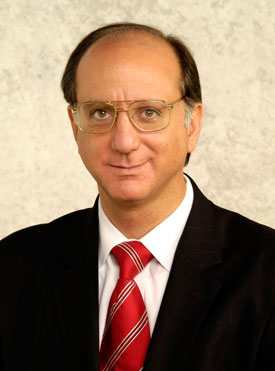Posted on July 29, 2014 by Lety Laurel

Dana Forgione
 Thanks to President Johnson, a rite of passage upon turning 65 has become enrolling in Medicare. Medicare was signed into law on July 30, 1965 and celebrates its 49th anniversary this month.
Thanks to President Johnson, a rite of passage upon turning 65 has become enrolling in Medicare. Medicare was signed into law on July 30, 1965 and celebrates its 49th anniversary this month.
Under the leadership of President Johnson, Medicare was originally established to provide health insurance to people age 65 and older, regardless of income or medical history. Before Medicare’s creation, approximately 65 percent of those over 65 had health insurance, with coverage often unavailable or unaffordable to the rest.
“Prior to Medicare, it was generally a pay as you go system,” said Dana Forgione , the Janey S. Briscoe Endowed Chair in the Business of Health in the UTSA College of Business. “Medicare payment was originally based on cost reimbursement, so costs rose under the system.
“It was originally projected to cost $8 billion by 2002, but today the costs are nearly $750 billion,” said Forgione, an expert in healthcare financial management. “The most significant change to Medicare occurred in 1983 where they changed to a prospective payment system—fixed price controls based on a particular diagnosis. While price was controlled, volume was not, resulting in the over utilization of services.”
The latest health care initiative is the creation of the Affordable Care Act. While it is too soon to analyze the success of this program, Forgione notes that the program is focused on bundled payments, accountability and quality of care.
According to Forgione, when Medicare began eight workers supported each retiree, now there are five workers per retiree. In the future when the baby boomers begin retiring, there will only be 2.3 workers supporting every retiree.
Yet, Forgione agrees that the Medicare system was needed. “Medicare filled a need,” he said. “A lot of elderly and retired individuals as well as those with disabilities and end-stage renal disease are provided with government healthcare because of this law.”
With Medicare occupying a huge chunk of the economy, what can be done? Forgione offers three suggestions to improve the current Medicare system. “With 30% of Medicare costs related to hospitalization, we need to incentivize the hospitals to be improve efficiencies. We also need to incentivize appropriate care and support quality care for patients.”
Forgione leads the college’s Business of Health program which includes a Business of Health concentration in the MBA program, a dual degree MBA/MPH program with the University of Texas School of Public Health and a graduate certificate program. The Business of Health program provides individuals with practical skills needed in today’s health care field. The focus of this program is distinctively on the applied financial and managerial aspects of health care.
Wendy Frost—
Please send your comments to: wendy.frost@utsa.edu


